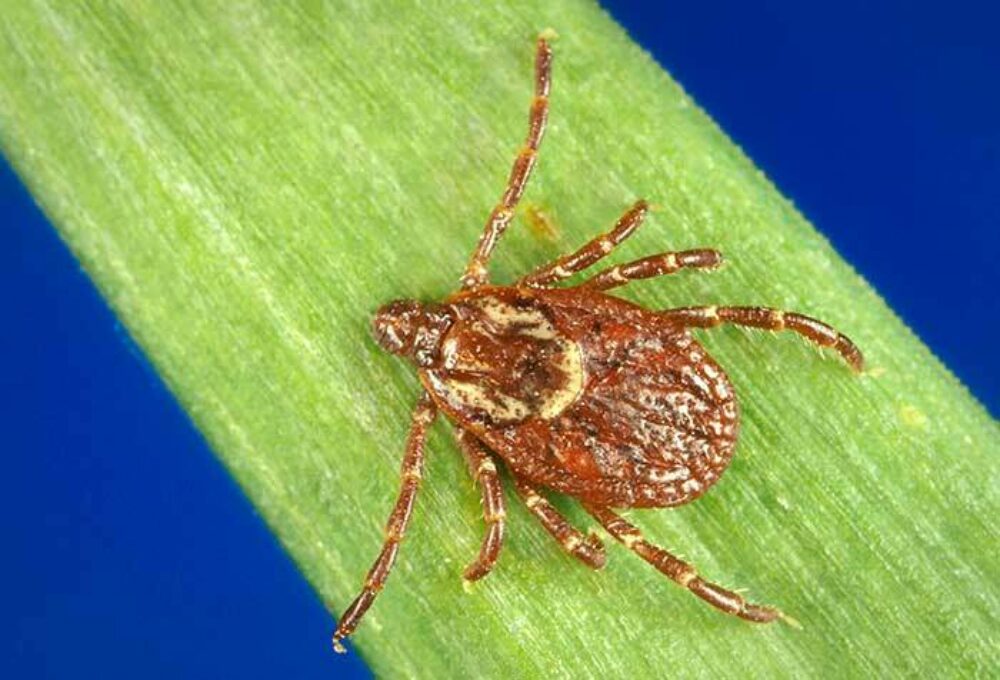Our Work / Stewardship
Be Tick Smart
Tips
Going Outside?
Before You Go:
- Pack tick spray.
- Find the right bug repellent for your outing using the US Environmental Protection Agency: Find the Repellent that is Right for You
- Wear light-colored clothing.
- Wear long pants and sleeves.
- Wear your hair up.
At the Preserve:
- Tuck your shirt into your pants and your pants into your socks.
- Put on tick spray.
- Keep your dogs leashed and nearby.
- Stay in the middle of the trail.
After the Visit:
- Use a lint roller on clothing before returning to the car.
- Remove clothing and put in the dryer at the highest setting for 10 minutes to kill any ticks.
- Perform a thorough tick check.
Tick Check
Ticks can sometime be hard to spot, that’s why it’s important to do a full head to toe check after exploring the outdoors. Ticks like warm moist areas so make sure to check under your arms, in the belly button, around the waist band, in between the legs and the back of the knees.
Image Credit: CDC
How to Remove a Tick

Image Credit: CDC
- Start by sanitizing all tools and area around the tick.
- With tweezers, grasp tick as closely as possible to the skin.
- Pinching the tweezers, you want to pull upward without twisting the tick. This will ensure you remove the whole tick. If the tick head remains within your skin, you can go back in with the tweezers and repeat the same motion.
- You don’t want to kill the tick with your fingers. Dispose of it correctly by placing it in a sealed bag/container, wrapping it tightly in tape or flushing it down the toilet.
- Make sure to sanitize the area around the tick bite afterwards.
For additional guidance check out the CDC's online tick removal assistant bot that can guide you through each step.
Follow Up - If you start developing rashes or fevers within weeks of removal, make sure to seek medical help.
ID

Image Credit: CDC
American Dog Tick (Dermacentor variabilis)
Transmits: Rocky Mountain Spotted Fever and Tularemia
Image Credit: CDC
Image Credit: CDC
Blacklegged Tick “Deer Tick” (Ixodes scapularis)
Transmits: Lyme disease, anaplasmosis, babesiosis, Borrelia miyamotoi disease, and Powassan virus disease.
Image Credit: CDC
Lone Star Tick (Amblyomma americanum)
Transmits: Ehrlichiosis, Tularemia, Bourbon Virus Disease, and Heartland Disease
Also is associated with alpha-gal syndrome (AGS).
Tickborne Diseases
Alpha-gal Syndrome (AGS)
AGS is not caused by an infection but is an allergic reaction to red meat and animal products containing the sugar alpha-gal. Alpha-gal doesn’t naturally occur in people. Evidence suggests that bites from the lone star tick are associated with the development of this allergy.
Symptoms: hives, nausea, diarrhea or anaphylactic shock
For more information, visit Alpha-gal Syndrome | CDC
Anaplasmosis-Human Granulocytic Anaplasmosis (HGA)
Caused by the bacterium Anaplasma phagocytophilum.
Symptoms: fever, chills, severe headache, muscle aches, nausea, vomiting.
For more information, visit Anaplasmosis | CDC
Babesiosis
Caused by the protozoan Babesia microti.
Symptoms: fever, fatigue and anemia (low red blood cell levels) lasting from days to months. It may take from 1-8 weeks for symptoms to appear.
For more information, visit Babesiosis | CDC
Borrelia miyamotoi Disease
Caused by the bacterium Borrelia miyamotoi
Symptoms: fever, chills, and headache
For more information, visit B. miyamotoi | CDC
Bourbon Virus Disease
This virus is very rare and has only been detected at extremely low levels in Suffolk County ticks.
Symptoms: fever, fatigue, rash, headache, other body aches, nausea, and vomiting. Scientists are still learning about possible symptoms caused by this relatively new virus.
For more information, visit Bourbon Virus | CDC
Ehrlichiosis
Caused by the bacteria Ehrlichia chaffeensis and Ehrlichia ewingii.
Symptoms: fever, chills, headache, muscle aches, and sometimes upset stomach
For more information, visit Ehrlichiosis | CDC
Heartland Virus Disease
This virus is very rare and has only been detected at extremely low levels in Suffolk County ticks.
Symptoms: fever, headache, fatigue, nausea and muscle/joint pain
For more information, visit Heartland Virus | CDC
Lyme Disease- Lyme Borreliosis
Caused by the bacterium Borrelia burgdorferi.
A characteristic sign of Lyme disease is a red circular rash (bull’s-eye rash) that may appear a few days to a month, at the site of the bite, after being bitten by an infected tick. If left untreated, Lyme disease can cause complications such as recurring swollen and painful joints, temporary facial paralysis or heart problems.
Symptoms: fever, headache, fatigue, stiff neck and muscle/joint pain
For more information, visit Lyme Disease | CDC
Powassan Virus
This virus is very rare and has only been detected at extremely low levels in Suffolk County ticks.
Symptoms: fever, headache, vomiting, weakness, confusion, seizures, and memory loss. Long-term neurologic problems may occur.
For more information, visit Powassan Virus | CDC
Rocky Mountain spotted fever
Caused by the bacterium Rickettsia rickettsii.
Symptoms: onset of moderate to high fever (which can last for 2-3 weeks), severe headache, fatigue, deep muscle pain, chills and rash, which begins on the legs/feet or arms/hands, and may spread rapidly to the rest of the body. Symptoms usually appear within 2 weeks of the bite of an infected tick.
For more information, visit Rocky Mountain Spotted Fever (RMSF) | CDC.
Tick-Borne Relapsing Fever
Normally caused by the bite of a soft tick.
Symptom: fever
Tularemia
Caused by the bacterium Francisella tularensis.
Symptoms: swollen lymph glands and a skin ulcer at the site of the bite.
For more information, visit Tularemia | CDC
Video
This moderated Zoom presentation — videotaped on Thursday, September 17, 2020, with tick experts will help you better manage exposure to this pest and give you confidence to explore the outdoors again.
Moderated by Melissa Parrott, Director of Environmental Education and Outreach with the Central Pine Barrens Commission, our panelists include the following experts in the field:
- Moses Cucura, Entomologist, Suffolk County Vector Control
- Daniel Gilrein, Entomologist, Cornell Cooperative Extension of Suffolk County
- Tamson Yeh, Pest Management and Turf Specialist with Cornell Cooperative Extension of Suffolk County




